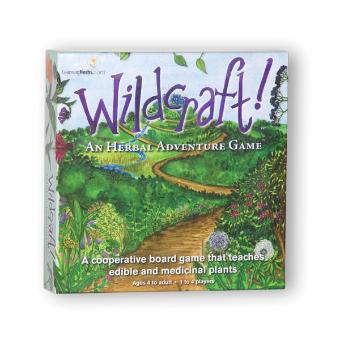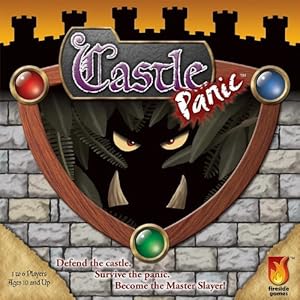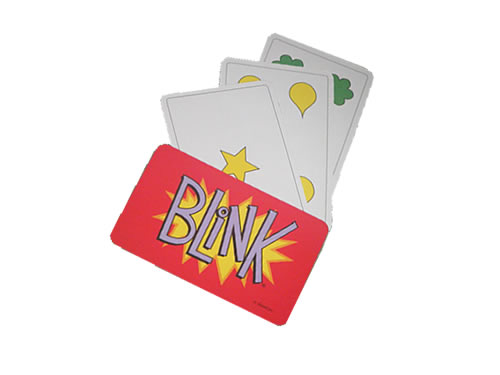This is the third and final week (for now) of music on Friday Night Lists. I’ve got a bunch more music lists, but my tastes are eclectic, and the world is full of things to list! The following bands/musicians are some of my favorites, and I’m sure many of you will know several of the names on the list. But given what a broad swath of the music scene they cover, I’m hoping you’ll discover at least one new artist that’s worth investigating. If you’ve got your own little-known, must-hear recommendation, please leave it in the comments for everyone to enjoy! And now…
10 MUSICIANS/BANDS YOU NEED TO HEAR
1. Robyn Hitchcock
What he sounds like: New Wave + Salvador Dali + silly British accents
You may have heard him: if you listened to college radio in the ’80s
Robyn Hitchcock is like the Monty Python of ’80s music: intellectual, frequently hilarious, surprisingly musical, and often nonsensical. Hitchcock started out in the influential ’70s group The Soft Boys, but went solo with some of the other Soft Boys as Robyn Hitchcock and The Egyptians. He’s got a long history of collaboration with other alternative artists, like Peter Buck of R.E.M., Billy Bragg, and Gillian Welch.
Here, try this: “Balloon Man” or “Uncorrected Personality Traits”
2. Frank Turner
What he sounds like: English folk music + punk + Buddy Holly
You may have heard him: at UK music festivals or opening for The Offspring or Dropkick Murphys
Former frontman for the punk outfit Million Dead, I can’t say enough good things about his fun, cool, loud, wonderful music. Trust me, I’ve tried.
Here, try this: “I Still Believe” or “The Road”
3. Neko Case
What she sounds like: Nancy Sinatra + Clannad
You may have heard her: on the Hunger Games and True Blood (Season 3) soundtracks
Neko (like Nico and the Velvet Underground, not Necco like the wafers) Case has an utterly distinctive voice that she deploys in music that’s not like anything else out there. Whether she’s solo, as on her albums The Fox Confessor Brings The Flood or Middle Cyclone, or with The New Pornographers, her sound is as addictive as it is indescribable. You just have to hear her.
Here, try this: “Hold On, Hold On” or “She’s Not There”
4. Jeffrey Foucault
What he sounds like: John Prine + Jack White + that staticky station in the middle of Kansas
You may have heard him: in small venue, new folk/Americana concerts
Here, I admit to rampant bias. I went to high school with Jeff (he was two years behind me), and we went to State Solo & Ensemble contest singing a Henry Purcell duet my senior year. Back then, he had a lovely, clear tenor. Now he sounds like someone put his voice in the dryer with a box of rocks–it’s as gravelly and aged and worn as the best old pair of blue jeans. He’s a fantastic songwriter, and he’s developed a sound that fits perfectly between old country music like Bill Monroe and Ralph Stanley, ’60s folk like Bob Dylan, and new Americana like Alison Krauss and Crooked Still. I can’t believe I know someone so wildly talented. It’s only a matter of time before he hits the big time.
Here, try this: “Ghost Repeater” or “Hello In There”
5. 1 Giant Leap
What they sound like: World Music + Trance + Deep Philosophy
You may have heard them: in the movie they made about recording their album
So I was flipping channels one day, and I came across this movie with Michael Stipe (of R.E.M.) singing. I paused to see what it was, and suddenly, Asha Bhosle, the high priestess of Bollywood music, is singing too. I watch longer, and see Robbie Williams, and Tuvan throat singers, and a West African tribe, and Michael Franti. Stitching together the songs and travel footage from all over the world are clips of interviews with people like Kurt Vonnegut Jr. and Tom Robbins, talking about concepts like love and beauty and death. My Mind Was Blown. Their greatest strength is in combining musical styles in geographically impossible, yet perfectly complimentary ways. If you’re a fan of world music at all, you need to hear their eponymous album.
Here, try this: “Braided Hair” or “The Way You Dream”
6. Hem
What they sound like: Southern folk + Dream Academy
You may have heard them: in the first Liberty Mutual “random acts of kindness” ad
I saw that ad, too, and searched the Internets all evening to find out what that gorgeous song was. Turns out, it’s “Half Acre” from Hem’s album Rabbit Songs. Lead singer Sally Ellyson’s voice is soft and sweet and haunting, and the instrumentals include steel pedal guitar, mandolin, and a nice assortment of acoustic music. Funnel Cloud is my favorite of their albums. If you want something to play as you enjoy a drowsy, humid summer night on the porch, look no further.
Here, try this: “Half Acre” or “Not California”
7. Flogging Molly
What they sound like: The Chieftains + Green Day
You may have heard them: at the last show of the night at Irish Fest
This band kicks all kinds of ass. Add another dram of punk to The Pogues, subtract a little hardcore from the Dropkick Murphys, and you’ll find the sweet spot called Flogging Molly. They do heartwrenching ballads, wild jigs and reels with a driving Ramones-like drum line, and recklessly cheerful drinking songs equally well. Not only do they sprinkle Irish nationalism liberally through their lyrics, but they also make forays into piratical themes. It’s almost impossible to sit still through their music, and the whole crowd feels like one big, Irish family by the end of their phenomenal live shows.
Here, try this: “What’s Left of the Flag” or “Float”
8. The Mutton Birds
What they sound like: Crowded House + R.E.M. + a trombone
You may have heard them: if you lived in New Zealand in the ’90s, or on The Frighteners soundtrack
You didn’t know there’s a “New Zealand sound”? Well, there is! My Darling Husband included a few of their tracks on the first mix tape he sent during our courtship, and I couldn’t get enough. It’s pretty straightforward pop/rock, with the quirky addition of a trombone here and there. But Don McGlashan, the band’s primary singer/songwriter, has an uncanny knack for telling complex stories in his songs, stories that each listener can interpret like a Rorschach inkblot. Each one is like a novel set to music. They’ve also done a few covers that did well on the antipodeal charts–they contributed “(Don’t Fear) The Reaper” to Peter Jackson’s film The Frighteners.
Here, try this: “Dominion Road” or “Ngaire”
9. E.S. Posthumus
What they sound like: John Williams + electronica + world music
You may have heard them: in many, many movie trailers
This group produces grandiose, classically styled themes, blended with electronic beats and distinctive regional instruments. The combination yields majestic landscapes of sound that lend themselves perfectly to big, impressive cinematic visuals–hence their popularity as movie trailer music. The only problem was that I would get so jazzed by the fantastic music in the trailer that I couldn’t wait to hear a whole score of it in the movie, only to go see the movie and hear its entirely different (often underwhelming) original music. If you listen to this, whatever you’re doing at the time will seem Much More Exciting!
Here, try this: “Pompeii” or “Nara”
10. Gillian Welch
What she sounds like: an Appalachian woman from the 1700s
You may have heard her: in the O Brother, Where Art Thou? and Hunger Games soundtracks
When I listen to Gillian Welch, I am certain the Space-Time Continuum has been subverted to project her voice 200 years into the future. Or she’s an evolutionary throwback, a weird genetic accident that gives her the purest, keenest folk voice I’ve ever heard. With songwriting and performance partner Dave Rawlings, she channels that exact moment in music when the English and Irish music that came over with early immigrants turned into something American. Her murder ballads will make your hair stand on end; everything else is simply riveting. She’s one of the three sirens at the river in O Brother, Where Art Thou? but, unlike Emmylou Harris and Alison Krauss, it seems impossible to imagine that ancient voice singing modern music. And that’s just fine.
Here, try this: “Didn’t Leave Nobody But The Baby” or “Caleb Meyer”
 Social Studies
Social Studies  4 Comments
4 Comments  It’s been a bad week in the media for people sensitive to trigger issues. Rape, consent, racism, intolerance, and general lack of humanheartedness abound, and with them the traveling herds of trolls who flock to such ripe feeding grounds from their mountain bridges.
It’s been a bad week in the media for people sensitive to trigger issues. Rape, consent, racism, intolerance, and general lack of humanheartedness abound, and with them the traveling herds of trolls who flock to such ripe feeding grounds from their mountain bridges. 1)
1)  2)
2)  3)
3)  4)
4)  5)
5)  6)
6)  7)
7) 


